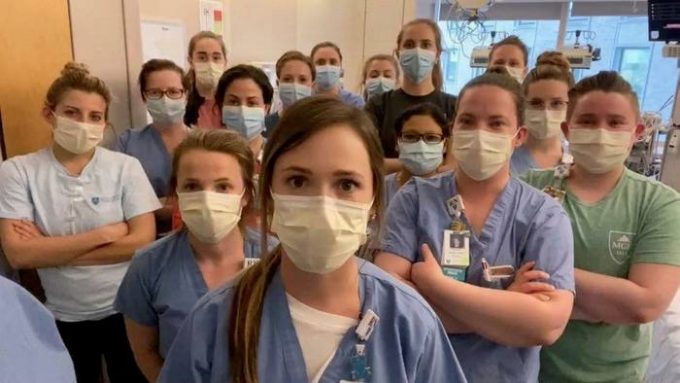It’s hard to understate the strains that COVID-19 has forced upon medical facilities around the world. From hospitals and emergencies to local practices, the rapid growth of the Coronavirus has flooded hospital beds, but it’s also threatened to overwhelm health institutions’ financial capacity. Many hospitals are responding to the pandemic by postponing elective procedures and visits in an attempt to filter all of their resources towards fighting the virus. To create more capacity for staffing and inpatient service, many hospitals have also resulted in shutting down their outpatient departments. Moreover, hospital staff are also receiving enhanced training to deal with outbreaks, with the aim of reducing the number of people who contract the virus.
However suitable these changes are to curb the spread of the Coronavirus, they pose serious questions on the ability of hospitals to remain financially viable. This is especially true for hospitals heavily reliant on elective procedures and outpatient services for financial relief. Medical caregivers with preexisting financial challenges are also having a rough time keeping up with the expectations amid the wake of a health crisis. Below is a compilation of strategies being used by medical institutions to handle finances during COVID-19.
1. Creation of Innovative Strategies

Many hospitals have resulted in attacking the shortages being experienced due to severed global supply chains with creative organizational and technical solutions. In some hospitals, they are repurposing post-anesthesia care units (PACUs) into Intensive Care Units. This has worked well in reducing the financial strain of constructing new ICU facilities within the medical institutions. The spike in the number of cases has overwhelmed hospital ICU units and compromised their ability to provide intensive medical care for COVID-19 patients.
Hospitals need to make changes to implement more stringent protocols for dealing with patients who’ve been affected. These protocols cover everything, from the initial diagnosis, where tests will be carried out to identify any underlying conditions, to the treatment that will be given. It’s hoped that by isolating those who have been affected, the chances of them spreading the virus to other patients are reduced.
In response to the shortage of Personal Protective Equipment (PPE’s) such as the N95 masks, many hospitals have been producing alternative mask designs that can allow their medical staff to interact with COVID-19 patients safely. Several medical institutions have also resulted in repurposing human medical assets. Due to the strained funds, it is not financially viable for a hospital to hire more staff. Most hospitals have now shifted to utilizing the existing staff to fill in the staffing gaps. Under the supervision of a specialist critical care nurse, generalist nurses are being trained to operate ventilators.
On a more public scale, health workers from general public institutions are also faced with the greater need of protecting the entire public. Remember that this unprecedented disease isn’t just spread through the hospitals, but even in public spaces as well.
For example, as soon as a patient who has contracted the virus becomes sick, they’re stopped from travelling or leaving their home. This is where public health officials come in, with their efforts to trace and prevent these individuals from going out. When the process is done successfully, not only is the virus stopped from spreading, but it can also prevent further contraction.
2. Relying on Additional Financial Support

To survive financially, hospitals are relying on additional financial support while treating patients of COVID-19. To cover provider expenses related to COVID-19 treatment, the AHA and ANA, recently requested for additional funding to the original Coronavirus Aid, Relief, and Economic Security Act investment of $100 billion. Hospitals only received half of this CARES Act funding. Due to the financial strain arising from hospitals cutting down on profitable services to chip in on the collective effort of curbing the spread, many hospitals are struggling to maintain their staffing.
Fortunately, a whopping $75 billion funding was approved to help medical institutions weather the tough times through the Payment protection program. This fund has helped hospitals maintain doctors and nurses required to handle the rising COVID-19 cases. Donors are a major tool that has seen hospitals overcome the financial implications of the novel coronavirus. Due to the reduction in avenues that most hospitals used to rake in profits, these medical institutions have been left to rely heavily on external financial assistance.
Unfortunately, one of the issues facing medical institutions is how to cope with the impact of the recession due to the economic effects of the virus. The severity of an outbreak varies from place to place. One thing’s for sure, however—it also brought with it financial strain even in the medical community.
Learn more about these dire financial support campaigns and other related problems by browsing sites such as nsbi.net.
3. Implementation of Financial Contingency Plans

To ensure ongoing liquidity in practice, hospitals have resulted in re-evaluating their financial obligations alongside the implementation of financial contingency plans. These plans are meant to shelter the medical institutions in times of lesser clinical revenue. By estimating the cash flow, hospitals are putting strategies in place to forego any unnecessary expenses. Hospitals and other medical practitioners have gone as far as considering partial closures of branches that may only add to the financial burdens.
Included in the financial contingency plans are measures to renegotiate with creditors. Hospitals have had to review their financial covenants and pre-existing loan conditions. Most institutions have initiated proactive communications with creditors, vendors, and landlords to discuss reasonable cash flow disruption accommodations. In response to the COVID-19 situation, medical institutions are considering delaying discretionary payments and bonuses.
4. Streamlining Processes

Hospitals have started working with primary care practitioners to set protocols on when it is absolutely necessary for the patients to be brought in to manage the surge of coronavirus patients. Patients with mild symptoms of COVID-19 cases can first be attended to by the primary care practices and only taken to hospital when need be. This has been highly effective in reducing the overwhelming effect of COVID-19 cases on hospital and ICU capacity, but it requires a lot of communication and time.
By contacting and forming post-acute care partners, hospitals are streamlining internal processes in that discharged patients, and the elderly COVID-19 patients can be taken care of by the post-acute caregivers. Hospitals, when appropriate, are also encouraging patients to utilize the local retail clinics and other outpatient facilities for diagnostic COVID-19 testing.
In terms of communicating effectively, hospitals and other health organizations have been utilizing health management software like Arcadia which can automate many of the reports needed during this time.
5. Establishment of Crisis Command Centers and Manager Roles

To mitigate the COVID-19 situation that has put great strain on the global health system, hospital leaders have resulted in establishing crisis manager roles as well as command centers within the hospitals. This involves the creation of situation rooms for addressing the surge of patients. The situation room is usually staffed with the senior operational leaders of the hospital or health system. In the situation room, the leaders focus on both long-term and short-term questions.
They then make the most suitable solutions to mitigate the problems identified. Some of these issues include assessing whether the emergency credentialing processes in place are working to boost the healthcare workforce. The hospital war rooms are characteristically staffed with hospital leaders from different sections, such as supply chain, finance, communications, and human resources. This helps the crisis management crew develop wholesome solutions. To disseminate these solutions to external and internal audiences, proper communication channels are being utilized.
Even as they face financial challenges, medical institutions are increasingly facing a risk of experiencing organizational challenges as the COVID-19 continues to wreak havoc on the global health systems. This has led to hospitals and other medical caregivers to devise effective ways to stay afloat amidst the ongoing pandemic.









